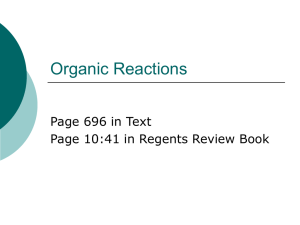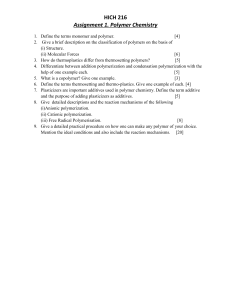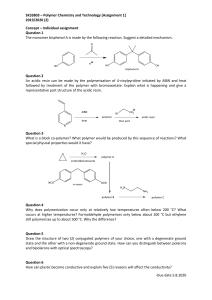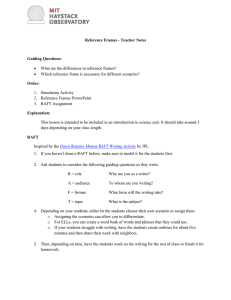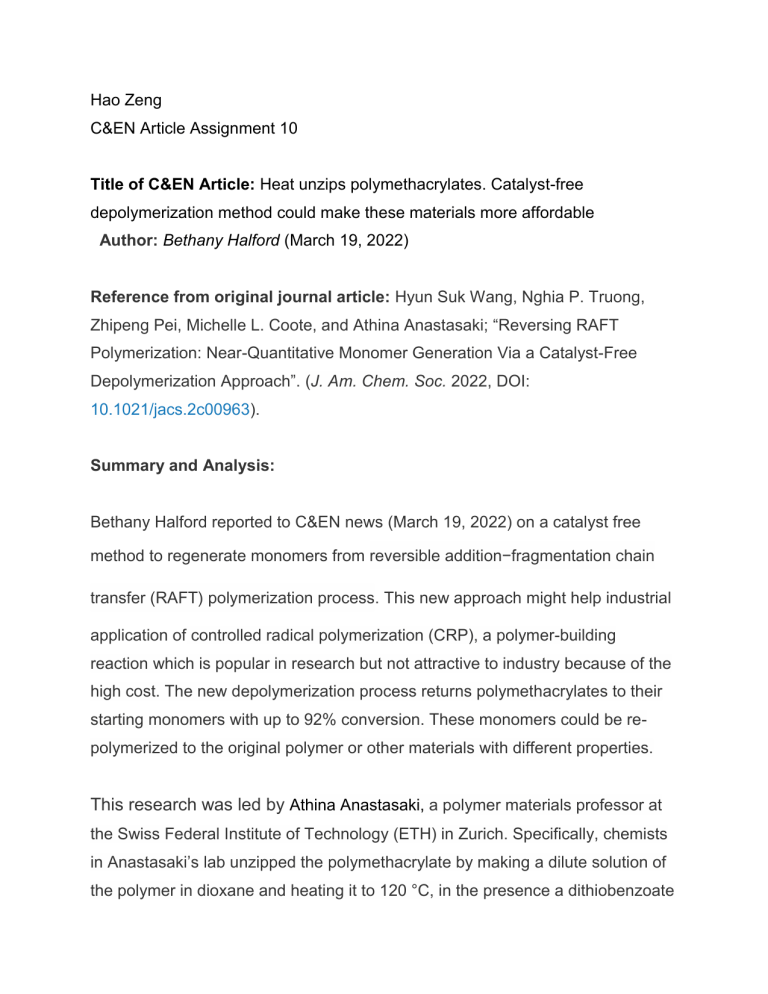
Hao Zeng C&EN Article Assignment 10 Title of C&EN Article: Heat unzips polymethacrylates. Catalyst-free depolymerization method could make these materials more affordable Author: Bethany Halford (March 19, 2022) Reference from original journal article: Hyun Suk Wang, Nghia P. Truong, Zhipeng Pei, Michelle L. Coote, and Athina Anastasaki; “Reversing RAFT Polymerization: Near-Quantitative Monomer Generation Via a Catalyst-Free Depolymerization Approach”. (J. Am. Chem. Soc. 2022, DOI: 10.1021/jacs.2c00963). Summary and Analysis: Bethany Halford reported to C&EN news (March 19, 2022) on a catalyst free method to regenerate monomers from reversible addition−fragmentation chain transfer (RAFT) polymerization process. This new approach might help industrial application of controlled radical polymerization (CRP), a polymer-building reaction which is popular in research but not attractive to industry because of the high cost. The new depolymerization process returns polymethacrylates to their starting monomers with up to 92% conversion. These monomers could be repolymerized to the original polymer or other materials with different properties. This research was led by Athina Anastasaki, a polymer materials professor at the Swiss Federal Institute of Technology (ETH) in Zurich. Specifically, chemists in Anastasaki’s lab unzipped the polymethacrylate by making a dilute solution of the polymer in dioxane and heating it to 120 °C, in the presence a dithiobenzoate RAFT agent. In doing so, the high end-group functionality of RAFT polymers generate chain-end radicals, which subsequently trigger a rapid unzipping of both conventional (e.g., poly(methyl methacrylate)) and bulky (e.g., poly(oligo(ethylene glycol) methyl ether methacrylate)) polymers. The depolymerization and monomer production was analyzed by 1H NMR to demonstrate the appropriate chemical shifts. The monomers generated can then be utilized to reconstruct the linear polymer or create an entirely new insoluble gel that can also be depolymerized. By regenerating both the monomers and the RAFT agent to reduce the cost, researchers hope to make the RAFT polymerization procedure, which has the advantage of precise monitoring product molecular weights, more appealing to industry. This work expands the potential of polymers made by controlled radical polymerization (CRP), pushes the boundaries of depolymerization, offers intriguing mechanistic aspects, and enables new applications in industry. The new method is believed to be better than conventional recycling because after the heat unzip, the products can be utilized for multiple processes including both repolymerization and depolymerization. By using a flow system that could recycle the solvent, the environmental concern of dioxane usage can also be addressed.

